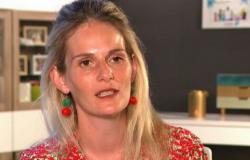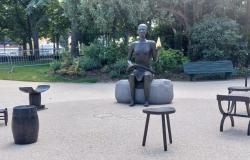This Friday June 7 and Saturday June 8, 2024, the third edition of the Friends of Genouillé festival offered a whole cultural program. On the theme of trades of yesteryear, the artists were able to exhibit works and compete to obtain prizes from the juries. This year, it was the public who voted to elect the winners. This festival is there to liven up the town, arouse curiosity around the artists and hidden treasures of Genouillé. A painting exhibition, within the Notre-Dame church, completed the works in the competition and allowed the artists to comment on their production. All day Saturday, a collection of vintage cars was on display for visitors. President Thomas Laffilay, musician and professional, concluded these two days with a musical moment. He invited a multicultural group, Slainte, to share Irish songs and music.
The history of the town highlighted
Simon Cohen Hadria, for two days, created a work inspired by Kiss by Munch. From two pieces of raw wood, the two characters came to life. The sculpture created was donated to the town hall.
The history of the town of Genouillé, the life of men in this rural territory was highlighted through an exhibition. There we find in particular the imprint of René Baudin, a professional shoemaker who knew how to create shoes starting from the raw material: leather. Clown shoes, this is not trivial, sat on a table. They owe their existence in particular to Philippe Chauveau, assistant, who in 1983 was part of a troop of young circus artists. He had asked René Baudin for a very special order: to make clown shoes. The right shoe has an open toe which allows a red balloon to pass through, inflated using a bulb and a tube hidden in the clown’s pants. The workmanship was of high quality since it has withstood the wear and tear of time. It is true that the shoemaker had also given advice on how to maintain the leather and ensure its longevity.
Competition result. First prize: “The forge” by Martine Granger. Second: “The washerwomen” by Line Boudet. Third: “The Plowman” by Pascal Canut. Fourth: “The spinner” by Jean-Marie Marshall.






